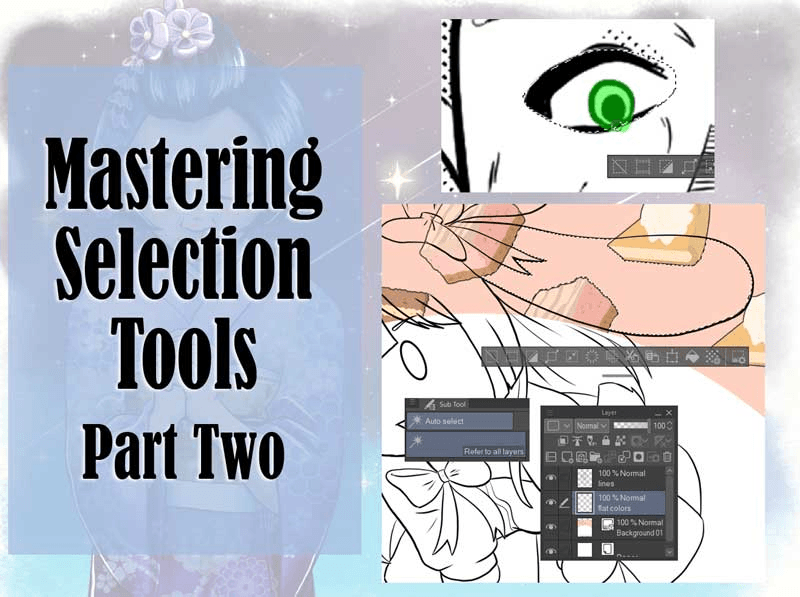Colour and Contrast in Digital Art
Hello! Thank you for taking a look here.
I’m uchuubranko, a digital artist with a love for fantasy. In this tutorial, I will show my colour palette, combinations, mixing patterns and how those can make a delicious contrast! Those patterns are not set in stone, so with experiments and practice you'll get closer to your own style! We all have different tastes in colour after all! :)
A) Colour Palette
I love highly saturated compositions. The "Base Colours" will be just in the middle of 'dark and bright'. I choose most of them from the middle-right part of the wheel.
For the sake of harmony, I use in-between colours. They bring balance to the composition, mainly in shadows and light. They have the same level of saturation or a bit lower, as shown below. Use the Pick Up tool after you brush, zoom into the canvas and take one of the colours!
B) What I use, what I avoid [Colours]
As shown above, I avoid them because pure neons don’t blend well with other neons, and most make in-between colours which I don’t need, such as faint browns. But please keep in mind that’s just me.
B2) What I use, what I avoid [Colour Combinations]
I arrange/design/sketch out my artwork elements so that they match my colour style. Tone placement is responsible for the overall mood, structure, and volume of your work. My style leans towards blues, purples, and oranges.
B3) What I use, what I avoid [Shadow and Light]
I arrange/design/sketch out my artwork light source so that it matches both with the setting and my colour style.
Example of given elements, illustrated below :
early morning light, forest, flying fairies = dim sunlight + dark leaves + shiny dots (fairy) and a bonus potion.
If I break down the potion's composition into blobs, it would look like this:
I apply shadows and highlights that are different from the base colours and are taken from surroundings, in order to balance the drawing.
Example of blonde hair colours displayed in a blue background:
As shown above, [blue BG + yellow hair = orange & purple shadows]
[Added a blue highlight for the hair to blend in.]
Now for a more technical view:
I avoid adding shadows of the same exact colour. Here I painted 3 versions of my base colours. You can notice the vibrance of the 2nd row after using the overlay layer on top of the bases.
To use the colours normally, simply < Merge the Overlay Layer into your Colour Layer >. If you have the Overlay on several layers, < Merge all of them >. If you only wish to have Overlay on one of the layers, <Clip> it to your layer then merge those two.
The overlay layer has trained my eyes over the years, and now I only use the overlays at the end of a painting. Nevertheless, they’re great for finding out what kind of “mood” would work for your piece.
C) Contrast [Light vs Dark]
Contrast generally gives a very powerful impression. It makes certain parts stand out thanks to composition and, in this case, light. It has the right to be extreme. Even soft tones can have an impact!
The basics:
C2) Contrast [With Colours]
The objective is to shock the eyes by using colours that are not neighbours on the colour wheel, as shown below:
C3) Contrast [With both Light vs Dark AND colours]
In this case, several basic scenes provide good examples:
Moonlit objects in a night BG
Sunlit objects in a dark BG
Magic trees shining in a dark desert night
Planets in space
The reverse contrast would be Backlight when a subject is backlit by a bright background, as shown below:
[tip: use Add(glow) Layers for extra glow]
Closure
I may use the overlay and add layers on:
basic tones, when colouring
enhancing shadows
enhancing highlights
modifying overall impact
Now with this great power, our eyes shall be shocked forever!╭( ・ㅂ・)و Thank you for reading my take on colours, I hope it helps!
























Comment